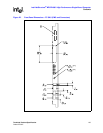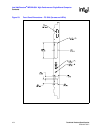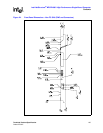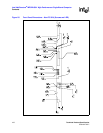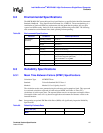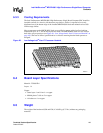
Technical Product Specification 111
Order #273817
Intel NetStructure
®
MPCBL0001 High Performance Single Board Computer
Contents
The utility is part of the BIOS release package and can be downloaded from the Intel web site at
http://www.intel.com/design/network/products/cbp/software/bios/mpcbl0001.htm. Refer to
Chapter 10, “Operating the Unit,” for more information.
7.4 Redundant BIOS Functionality
MPCBL0001 hardware has two flash banks for BIOS where redundant copies are stored. BIOS
bank selection logic is connected to the IPMC, and the IPMC firmware allows selection of the
BIOS bank.
By default, firmware selects BIOS bank 0. BIOS executes code off this flash and performs
checksum validation of its operational code. This checksum occurs in the boot block of the BIOS.
If the boot block detects a checksum failure in the remainder of the BIOS, it notifies the IPMC of
the failure. In case of failure, the IPMC firmware:
1. Asserts the RESET pin on the processor.
2. Switches the flash bank.
3. Deasserts the RESET pin on the processor, allowing BIOS to execute off the second flash
bank.
7.5 System Management BIOS (SMBIOS)
SMBIOS is a Desktop Management Interface-compliant method for managing computers in a
managed network.
The main component of SMBIOS is the management information format database, which contains
information about the computing system and its components. Using SMBIOS, a system
administrator can obtain the following information for system components:
• System types.
• Capabilities.
• Operational status.
• Installation dates.
The management information format database defines the data and provides the method for
accessing this information. The BIOS enables applications such as third-party management
software to use SMBIOS. The BIOS stores and reports the following SMBIOS information:
• BIOS data, such as the BIOS revision level.
• Fixed-system data, such as peripherals, serial numbers, and asset tags.
• Resource data, such as memory size, cache size, and processor speed.
Non-Plug and Play operating systems, such as Linux or Windows NT
*
, require an additional
interface for obtaining the SMBIOS information. The BIOS supports an SMBIOS table interface
for such operating systems. Using this support, an SMBIOS service-level application running on a
non-Plug and Play operating system can obtain the SMBIOS information.



